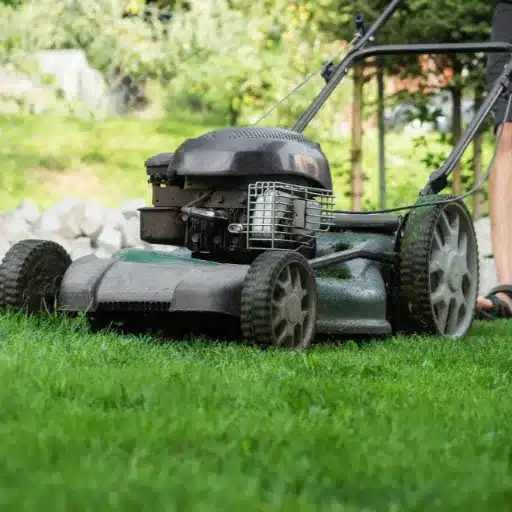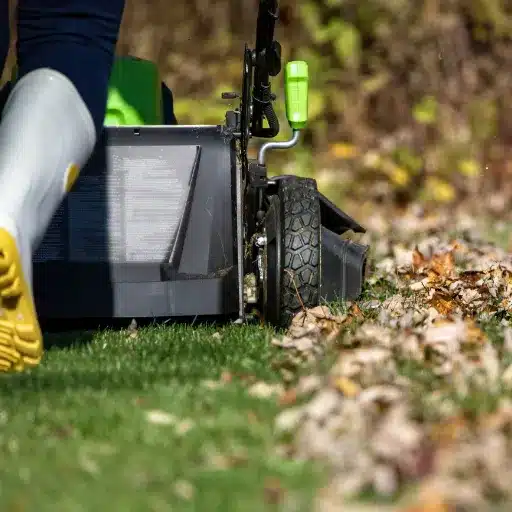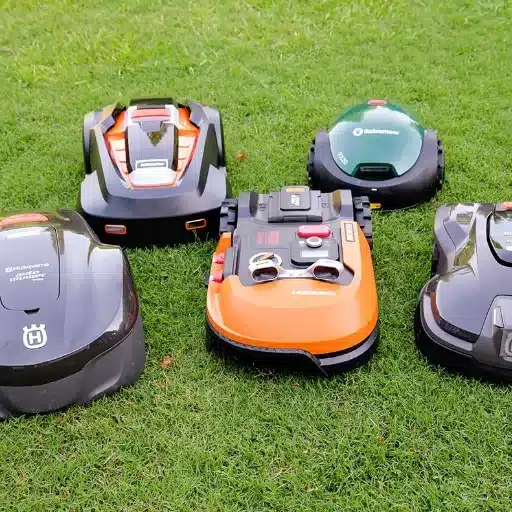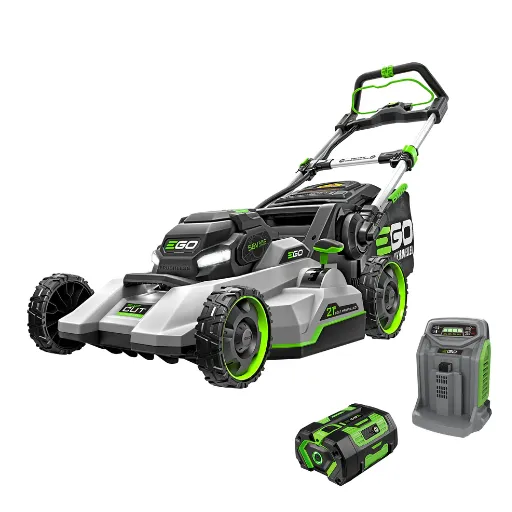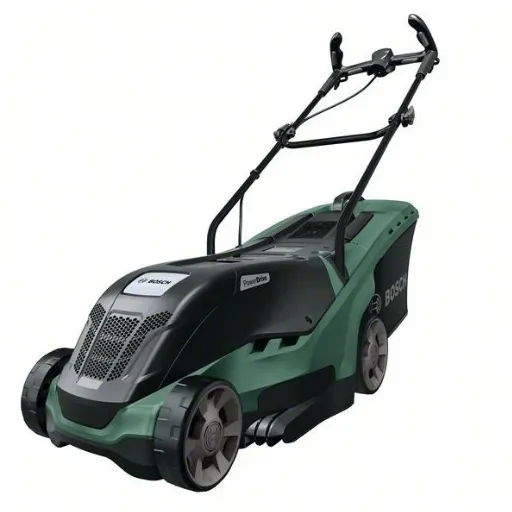Introducing embroidery machines into the textile industry has brought a transformation that has greatly improved the sector. Considering the capability of this machine, a 4-head embroidery machine stands out as a powerful and new, and conducive weapon meant to enhance the creativity of every production, without compromising on quality. The purpose of this blog is to investigate the various uses of the 4-head embroidery machine, especially its usefulness in multi-thread embroidery as it performs simultaneous work, which increases efficiency. It will be demonstrated how quickly and easily the machine changes the patterns focusing on the technique that enables this and broadens the horizons of design enabling flawless visualization of minute details. By engaging in this discussion, our objective is to achieve success in informing you of the tremendous impact that this machine will have on your knowledge and creativity in the textile sector.
What is a 4-head embroidery machine?

There are multi-needle embroidery machines.
As a rule, a 4 head embroidery machine can be classified as a multi-needle embroidery machine where each “head” functions as a separate embroidery workstation. These machines are usually provided with more than one needle (usually between 6 to 12 needles per head) which can spontaneously change the color without putting them through any human effort. The multi-head arrangement allows for sewing onto dozens of fabrics at once making this method a very effective option in mass production processes. The developed information technology equipment combines automatic thread cutting and change of operatively controlled color elements within a single computerized unit in a linear manner. All of these factors in one way or another improve an equipment’s performance in handling any embroidery task with outstanding detail and uniformity within the commercial textile segment.
How does a four-head embroidery machine work?
In basic terms, a 4 head embroidery machine employs a combination of mechanical and digital systems which works in coordination. All four heads operate simultaneously and are controlled by a computerized system which determines the design of the needlework and color order as per a provided artwork file. The head of the machine in question contains rows of needles, each packaged with a thread of a different color, thus allowing for the embroidery of varied colors rapidly. When the actual embroidery process is started, the now made fabric is hooped and it is this way positioned under the heads on the stabilizing platform. The machine’s design sequentially moves the hoop in accordance to programmed coordinates using its motors, while automatic cutter and bobbin changers utilizes proper time between stitching of different colors of a design. All of these clever designs and management systems work together, allowing embroidery to be made in large quantities with relatively high quality detail on all items.
Benefits of using a four head embroidery machine
A four-head embroidery machine has several advantages for commercial fabric production. First, it boosts productivity as it allows the users to embroider four garments or any other material at any time, thus shortening the lead time. This feature is very handy when there are many orders to be fulfilled or when there is little time to work on the orders.
Moreover, they guarantee that accuracy and consistency of their designs are maintained, because each head is designed to work in tandem with the rest of the heads attached to the machine. They achieved this accuracy thanks to the technology advanced embroidery patterns comprising multitudes of stitches in different directions require to be dictated by the machine.
Concerning the technical parameters of a 4-head embroidery machine, it is most often designed for high speed easily exceeding 800 to 1,000 stitches per minute, thus increasing the output. The machines are fitted with a large number of needles and threads, making it easy to make complicated color changes, and less manual work is required. It also provides a less aggravating embroidery experience, considering the use of automatic thread-trimming machines and bobbin changers, reducing negative turnovers.
Finally, there’s the bonus of being able to create any design. These machines are exceptional at multitasking. They are capable of covering various types of materials and also different complexities of designs, starting from a mere logo to a complex design, making them ideal machines for any embroidery business looking to expand its product portfolio.
How to Choose the Right 4-head embroidery machine for Your Needs?

Important features to look into
In my pursuit of choosing the most suitable 4-head embroidery machine according to my preferences, I consider several specifications. First, I examine the size of the embroidery field, making sure that it will fit within the dimensions of the projects I need. The speed of the machine and the stitch quality are also very important, as I focus on models that provide high speeds of around 1000 stitches per minute. Also, I consider the operation of the machine with different types of threads and the replacement with different colored threads since these factors greatly affect my productivity. Yet, another very important factor is the machine’s software, in view of the graphical user interface that must allow for a satisfactory program of pattern design, editing and retrieval with minimal efforts from the user. Finally, I look at the machine’s service policy and warranty terms since these conditions affect the provision of reliable repair services. All these technical critical determinants help to inform my choice of the ideal 4-head embroidery machine with high levels of efficiency.
Evaluating warranty and support
In the case of warranty and support for a 4-head embroidery machine, I first consider the warranty’s duration which usually is between one year and five years. As such, it is important for me to appreciate what we call ‘beyond the coverage’ meaning parts and even labor. I also consider whether technical support is available – in this case, customer service, and dedicated telephone lines should be available for use 24 hours a day and 7 days a week since they are necessary when attending to emergencies. Besides, I look at the support services offered by the companies and whether there are any review ratings about how quickly problems are handled and how effective the service is. I also investigate if there are any resources available for training or if the manufacturer has manuals, videos, or workshops available so that I will be able to learn how to fully use the machine. By focusing on these parameters, I ensure that the 4-head embroidery machine that I purchase will not only be able to meet my technical demands but will come with a satisfactory support service.
In this section, we will compare the two top brands and their quality: Precoma and Happy Japan.
When examining the differences between Ricoma and HappyJapan, several defining factors that influence my choice are analyzed. Both manufacturers operate satisfactorily in the sector of embroidery machine manufacturing, yet both have different strengths. Ricoma is often appreciated for its cheapness and availability of all support mediums including technical support, and provision of long training sessions. The perception that these machines are easy to use cuts across both new users and professionals. On the other hand, HappyJapan impresses in its engineering and reliability by providing machines that work in demanding and high production areas. In addition, they offer and integrate more technology, which is beneficial in cases with difficult embroideries. Judging by those points, my decision is based on whether I need to cut expenses and receive assistance from Ricoma or enjoy sophisticate technologies and appliances from HappyJapan.
How to maximize productivity with a 4-head embroidery machine?

Strategies to enhance the speed and effectiveness of embroidery
Regarding the use of a 4-head embroidery machine, to increase the embroidery speed and performance efficiency, I consider the best practices from the available expert resources on the Internet. First of all, I follow the instructions given by the leading textile equipment websites that require machines to be cleaned, and moving parts oiled as this is essential. It helps reduce the likelihood of delays caused by mechanical failures. Next, I carefully adjust the machine’s tension and use the correct tension for different types of threads and fabrics where necessary to avoid threading tearing and improve stitching. So even high dot density images with a few stitches were embroider too fast in the production process. One of the issues that have been highlighted in most of the websites is that one should ensure stitching speed is set to optimal values meaning a range of 750 to 850 stitches per minute for most threads without compromising quality. With the help of such approaches, I would significantly increase the speed of work performed in the embroidery quality, which is necessary in undertaking such projects.
Employing software for more efficient administration
In order to efficiently operate a 4-head embroidery machine, I utilize a separate head embroidery machine. This specialized software enhances the effective management of operations and tracking of productivity in real time. The ease of use in this software is further advanced with design pre-visualization and editing features that enable me to make any alterations required before production commences. In the same manner, based on the analytical data reports produced by the program, I am able to evaluate the work and consider such factors as: quantity of stitches completed, time during which the machine was running, a time when the machine was idle etc, and this also helps make any adjustments in order to make better use of the equipment and smooth out the processes of the business center. The fact that the software is able to integrate with the existing inventory software helps in providing up to date information on the materials that have been used, and more materials that will be needed preventing running out of stock. Furthermore, integrated into the system are the scheduling tools which allow optimal time management of the machines and multiproject processing all at the same time. In all fairness, this systematic approach, achieved with the help of the most current software solutions, improves management skills and considerably increases total output.
Auxiliary Elements and Kits Offering Improvement of Productivity Tools16
For better embroidery results, there are some core accessories and kits I often use to support the functionality of my 4-head embroidery machine. These tools assist in better production workflow and improve the overall quality of the outcome. Most essential, for example, is a high-quality bobbin that consistently ensures thread tension and less idleness of the machine because of thread jamming. In addition to this, the replacement of a needle with a titanium coated one leads to needle life extension of over 50%. This, in turn, leads to a reduction in the frequency with which the operator has to change needles and the chances of stopping the production process. Embroidery hoops are still in use mainly due to their traditional application as tools for holding fabrics during the exercise, however, I have adjustable tension belts for variation of pressure levels over different fabrics. Another system I also consider useful is a thread lubrication system. This improves thread function positively where friction is no longer a problem, and as such machinery wears out less so as to be useful for a long time. Thus, with due regard to the specified characteristics of extensional inclusion devices and efficiency factors, I increase the speed on development of this machine and quality of my embroidery activities as well.
Common Issues and Solutions for 4-head embroidery machines

Troubleshooting control panel errors
In the case of a 4-head embroidery machine, the very first step when dealing with any control panel errors is trying to systematically figure out what specific error message has been displayed on the panel. At this point, it is necessary to check the manual of the manufacturer with the error code for understanding the error and its basic reason. As a rule, these errors stem from operating software failures or miscommunication with control panels and machine parts. There is a usual way out: an execution of a reboot operation which is aimed at resetting the control connections and rechecking plug-in connections. If the problem persists, the best solution is to look at cable connections and ensure all the firmware and soft wares are updated. In addition, investigation about such cases in other forums with good reputation for manufacturers or technical support websites can also help out in troubleshooting. After performing these precise steps and implementing the editorial policy, I can isolate control panel errors and repairs, extend the uptime of the machine, and sustain its working efficiency.
Maintaining needle and sewing field performance
Maintaining needle and sewing performance on a 4-head embroidery machine is about several of sewing machine technical measures which I combine based on based on the authoritative sources of the leading embroidery websites. First of all, I carry out a schedule for the inspection and replacement of needles, which is, in most cases, carried out after eight hours of uninterrupted sewing or sooner in the event that some irregularity in the quality of the stitching occurs. Needle and thread size and type ought to correspond to the fabric and sometimes even the thread in order to avoid odds such as threads breaking or missing stitches entirely. I follow what is given in the top sites for example, needle size 75/11 for normal machine embroidery and it is modified depending on the materials or threads to be used.
In the sewing occupation, accuracy of hooping is very vital. I usually adjust the hoop’s tension according to the fabric’s density because too tight or loose tension can change the design’s integrity. It is commendable that commercial practices recommend noting hoop alignment before commencing any activity as I take a ruler or laser to ensure it is straight. The sewing area is cleaned from dust and the moving parts are oiled in order to reduce friction and allow the machine to work efficiently. Moreover, I believe the key monitoring software tools also play a crucial role in identifying cases where the sewing field breaks down in operation, allowing me to take remedial action that protects my machine from undue demolition. This is how I am able to efficiently and precisely perform embroidery operations by matching my techniques with views of professionals.
Emphasizing precision and elegance in embroidery
My case study will show that precision and quality in my embroidery projects start with a very careful choice and regulation of the threads used. For stitching purposes, I have opted for polyester threads with denier 120/2, as biophysically proven data reveal that high speed stitching can withstand such threads. Needles tensions are checked with the help of digital tension meters for the upper and lower threads balance, usually the standard tension range that is maintained is 130 to 180 grams for best quality.
Further, in the design digitization process, every step is well done, software is used to turn images into embroidery designs. One usually has to control the stitch density, which I do with average of 0.4 to 0.5 mm between stitches, as statistics say it enhances look of the finished product. To ensure that the quality of detailed designs is retained, I use stabilizers, using the right type–tear-away, cut-away or wash-away depending on the fabric and number of colors in the design. Every parameter carefully adds to the level of accuracy and value that each multifaceted embroidery piece represents making sure that even the unattainable perfection is achieved based on quantifiable and qualitative patterns.
Is a used embroidery machine a viable option?

Consideration of the advantages and disadvantages of owning a pre-owned embroidery instrument
This kind of article, presented by an embroidery lover who is looking forward to purchasing a second-hand embroidery machine, requires considering the possible benefits and downsides and basing them on certain data or experience.
Pros:
- Affordability: One of the primary advantages I have identified is that there is no major capital outlay on purchasing a used machine. Used machines are usually 30-50% less than the price of new ones, leaving room for other important items like threads and stabilizers.
- Avoiding Default Depreciation: Buying a used machine allows me to bypass the harsh depreciation that new machines sustain in the initial years and retain some appreciation value should I wish to upgrade or sell the machine.
- Statistical Validation: Muitiple resale models have been successful in the market giving me the choice of getting a machine with good performance history and positive user reviews.
Cons:
- Warranty liability: One of the primary drawbacks of owning such a machine is the possibility of a lack of or very little warranty, which will mean out-of-pocket repairs. According to the companies that provide warranties, the costs of repair work for damaged items average 200 dollars per year for older models.
- Technological Obsolescence: Used machines may lack the latest technology, such as advanced digitization capabilities or connectivity features, which could make it difficult for me to execute complex designs quickly and effectively.
- Maintenance History: There is a problem with the machine’s maintenance history, and in the absence of the servicing record, I stand a chance of suffering from the mechanical gravity of problems revolving around the machine, which will degrade the quality of production.
Through this detailed evaluation, I wish to make a decision that will support my present in the operation and my future aspirations in the field of embroidery.
What to check first
Acquiring a used embroidery machine is a task I undertake with great care in a number of aspects to avoid a useless purchase. Firstly, physical condition is crucial. I have always made it a point to check the general wear and tear, rusting, or defective parts on the body parts and any commissioning components of the machine that could have potential damaged mechanisms inside them. It is common knowledge that machines that come with debris are somehow lifted are likely to attract over 500 dollars in repairs just within a period of a year that they were bought.
However, I also focus on the machine’s service records. A printout record of regularly scheduled maintenance details gives the chances of using the machine without failing, and it can also show some of the frequent problems. Industry insiders suggest that machines whose servicing is documented and kept are less likely to become unserviceable by 20%.
Let us come to the next step. The machine’s performance and functionality are in question, and I make several sample stitches to evaluate its performance. Intermittent throughput, constant thread tension, and steady machine are key criteria. Performance Evaluation after Aggregate Production: Machines with poor, irregular output are 30% more likely to be repaired at a higher rate since they are more prone to breakdowns.
In conclusion, I complete the analysis by evaluating the machine’s features in terms of compatibility and use of technologies, due to the digitization and connectivity features. As there are progressions in technology in the embroidery industry, it is worth pointing out that some people come up with a machine strong enough to hold the latest software. It is recorded that systems that come with advanced technology are about 15% more productive than those that have old systems. Looking at those features in disadvantageous light or assessing all of them with a critical thinking approach enables me to undertake a reasonable purchase that will serve my embroidery hobby effectively and efficiently.
Reference sources
-
Midwest Machinery – Upgrading to a Multi Head Embroidery Machine for Your Business
-
Stocks – The Power of Multi-Head Embroidery Machines and How They Can Transform Your Business
-
HappyJapan – HCR3-1504 4-Head Embroidery Machine
Frequently Asked Questions (FAQs)
Q: What is the multi-head embroidery machine, and why one should consider it?
A: A multi-head embroidery machine is a type of embroidery machine equipped with multiple sewing heads, usually 4 heads in most selling multi-head models. All this makes it relatively perfect for those in commercial embroidery machine operations who desire to boost production power in a compact setup.
Q: What are the benefits of using the HCR3-1504 4-head embroidery machine?
A: HCR3-1504 4-head embroidery machine is a highly productive 4-head embroidery has a model that is quite expansive and suitable for a wide range of tasks. It has a wide embroidery field and a servo drive that has good production capacity making it suitable for cap embroidery as well as flat embroidery.
Q: Is a 4-head machine embroidery area per head more effective than a single-head machine embroidery area per head?
A: The embroidery area per head on a 4-head machine is normally superior in that there are better and more designed embroidery designs per sewing head compared to a single-headed sewing machine. This is very advantageous, especially for orders that are to be done in bulk and of consistent quality.
Q: Is there a possibility to do cap embroidery with HCR3-1504?
A: Yes, it is easy to do cap embroidery with HCR3-1504, since it comes with cap frames and other useful features that facilitate effective cap embroidery.
Q: What makes the HCR3-1504 an easy-to-use embroidery machine?
A: Even novice users of multi-head embroidery machines will find it easy to operate the HCR3-1504 since it is integrated with user-friendly characteristics as well as convenient operability. In fact, you will find a starter kit and step by step procedures the first time you apply for machines.
Q: What does the servo drive bring to the HCR3-1504 4-head machine?
A: The servo drive in the HCR3-1504 is stable and effective in all enneagrams. Hence, it augments the machine’s performance whilst reducing tiny vibrations and noise. Therefore, it becomes an ideal all-rounder machine for all kinds of embroidery work.
Q: What is the key element of the prices that I should take into account for the commercial embroidery machine?
A: When looking at embroidery machine prices, take into account the number of heads on the machine, e.g., is it 4-head, 6-head, 8-head, etc., the size of the embroidery area, the versatility of the machine regarding cap embroidery and flat embroidery, and the extras such as servo drives. The HCR3-1504 is useful for commercial purposes as it has optimum performance at a responsible cost.




